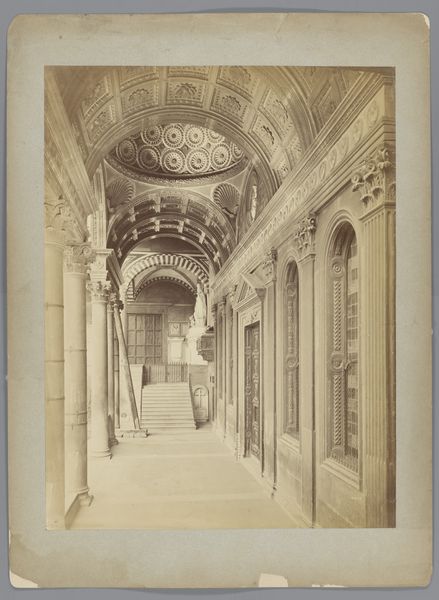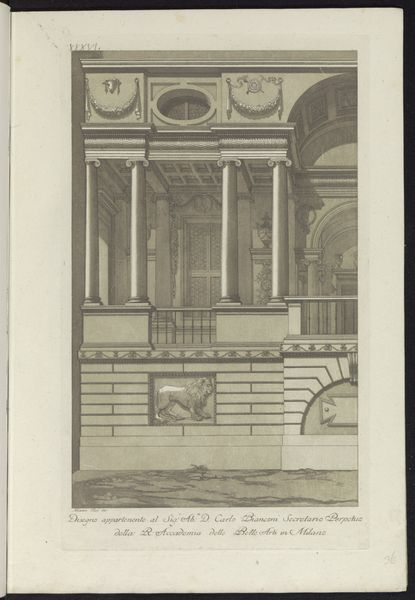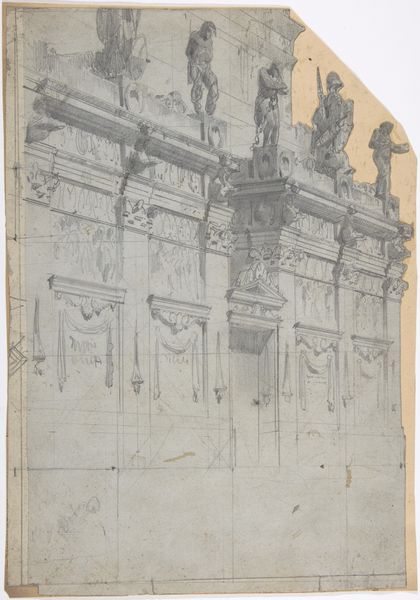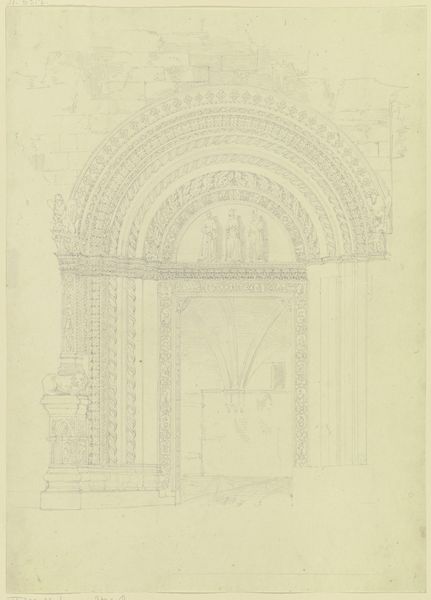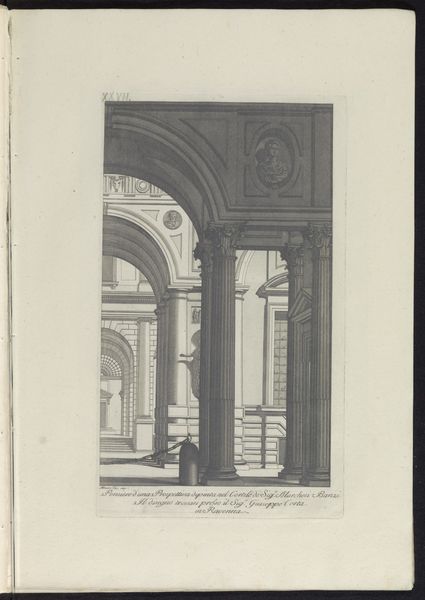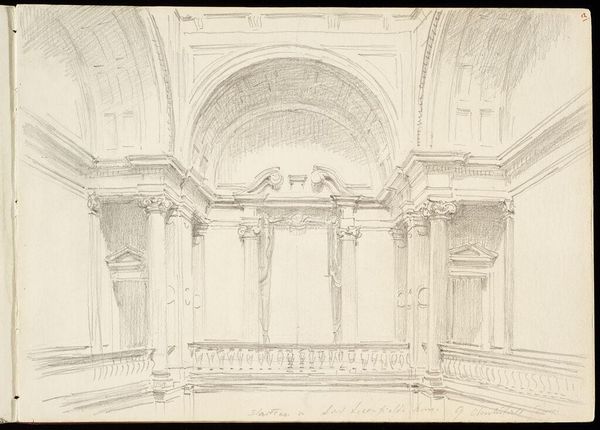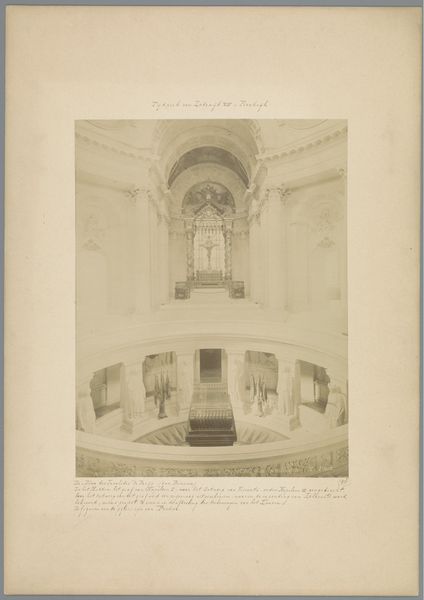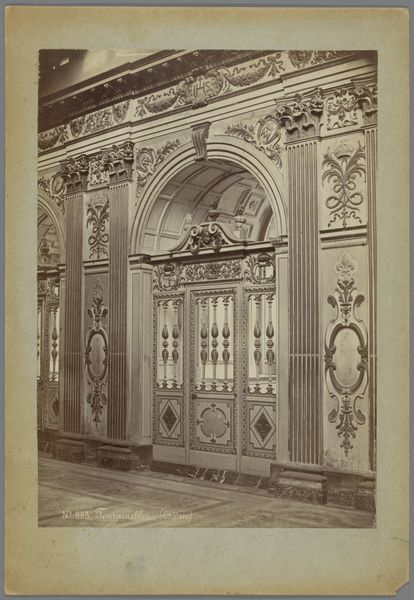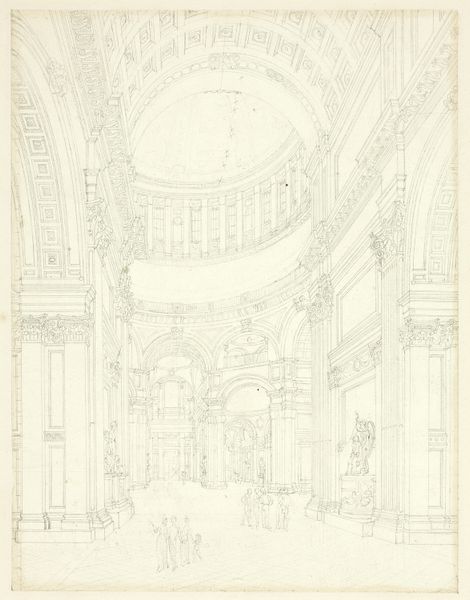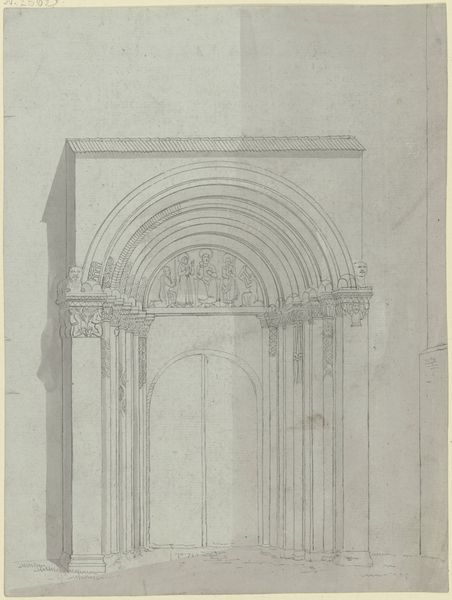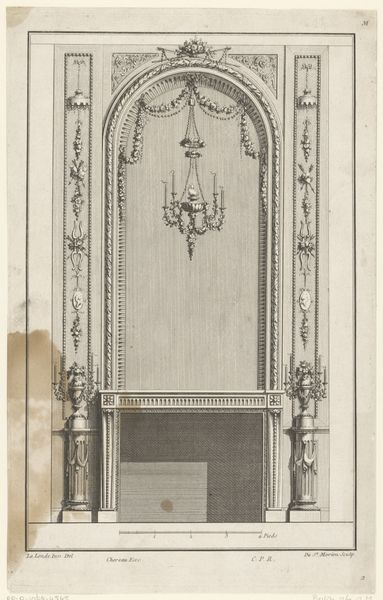
drawing, print, architecture
#
drawing
#
neoclacissism
# print
#
perspective
#
form
#
line
#
architecture
Dimensions: 22 x 17 3/16 in. (55.9 x 43.7 cm)
Copyright: Public Domain
Curator: Before us is Jean François Chalgrin’s "Interior of St. Peter's Basilica," a drawing created between 1759 and 1761. It's currently housed at the Metropolitan Museum of Art. Editor: My first impression is… vastness. An almost overwhelming sense of architectural scale rendered in delicate lines. There’s a strange tension between the immensity of the space and the subtlety of the drawing. Curator: Chalgrin, deeply rooted in Neoclassicism, used precise perspective to emphasize the power and grandeur of the Church. I believe the choice of depicting St. Peter's is particularly meaningful here. Considering his involvement in revolutionary projects later in his career, what interpretations do you see for this almost reverential approach towards institutional power? Editor: That contrast is interesting. Looking closely, I am curious about the material processes involved. The level of detail suggests meticulous planning and labor, and a social context defined by unequal access to resources, that went into commissioning this work and maintaining St Peter’s as an idea and a material building. This linear approach, devoid of vibrant color or texture, amplifies this idea of order and control through artistic production. Curator: Indeed. It highlights the era’s interest in rationalism. I'd suggest the artist aimed to highlight the imposing architecture with the message and reach of religious power, making commentary on faith's societal influence through this play with lines. Also, observe the figures in the foreground, seemingly dwarfed. They represent the individual lost within the structure of religious power, which, historically, wielded enormous influence over identities. Editor: But also think about who had access to these interior spaces, both the physical building and the representation here in the drawing. What kinds of labor does that entail? Who does that labour? How did this system get implemented by people in this context, even with this detailed image of what they sought to uphold. Curator: Fascinating point. The drawing becomes a document of labor, class, and access. I am beginning to see it through the frame of accessibility, which in turn enhances my awareness about my own location in that framework. Editor: This piece is a testament to how art captures not just beauty but systems of power through physical making and seeing. Curator: Agreed. Seeing it as a material document really opens up new questions regarding history and impact.
Comments
No comments
Be the first to comment and join the conversation on the ultimate creative platform.
